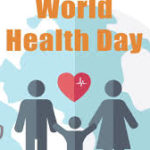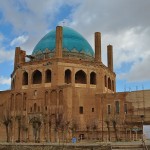 The United Nations’ (UN) International Day of Remembrance of the Victims of Slavery and the Transatlantic Slave Trade is on March 25 each year. It honors the lives of those who died as a result of slavery or experienced the horrors of the transatlantic slave trade. It is also an occasion to raise awareness about the dangers of racism and prejudice.
The United Nations’ (UN) International Day of Remembrance of the Victims of Slavery and the Transatlantic Slave Trade is on March 25 each year. It honors the lives of those who died as a result of slavery or experienced the horrors of the transatlantic slave trade. It is also an occasion to raise awareness about the dangers of racism and prejudice.
The International Day of Remembrance of the Victims of Slavery and the Transatlantic Slave Trade remembers the lives of transatlantic slave trade victims.
What Do People Do?
Various events are held on the International Day of Remembrance of the Victims of Slavery and the Transatlantic Slave Trade. These include memorial services and vigils for those who died in slavery, as a result of the slave trade, or from campaigning to end of slavery. In addition, African-American inspired music is performed and exhibitions of art and poetry inspired during the slave trade era are opened.
This day is also an occasion to educate the public, especially young people, about the effects of racism, slavery and the transatlantic slave trade. Educational events are held in schools, colleges and universities.
Background
About 17 million people were transported against their will from Africa to North, Central and South America during the 16th century and up until the 19th century. Millions more died while being transported to the Americas. This mass deportation and resulting slavery are seen as one of the worst violations of human rights. Some experts believe that its effects are still felt in Africa’s economies.
Slavery was officially abolished in the United States on February 1, 1865. However, racial segregation continued throughout most of the following century and racism remains an important issue today. Hence, the International Day of Remembrance of the Victims of Slavery and the Transatlantic Slave Trade is an occasion to discuss the transatlantic slave trade’s causes, consequences and lessons. It is hoped that this will raise awareness of the dangers of racism and prejudice.
On December 17, 2007, the United Nations General Assembly designated March 25 as the International Day of Remembrance of the Victims of Slavery and the Transatlantic Slave Trade. It was first observed in 2008.
 International Mother Earth Day was established in 2009, by the General Assembly under Resolution A/RES/63/278. The Resolution was introduced by The Plurinational State of Bolivia and endorsed by over 50 member states. It recognizes that “the Earth and its ecosystems are our home” and that “it is necessary to promote harmony with nature and the Earth.” The term Mother Earth is used because it “reflects the interdependence that exists among human beings, other living species and the planet we all inhabit”. It is decided to designate April 22 as International Mother Earth Day.
International Mother Earth Day was established in 2009, by the General Assembly under Resolution A/RES/63/278. The Resolution was introduced by The Plurinational State of Bolivia and endorsed by over 50 member states. It recognizes that “the Earth and its ecosystems are our home” and that “it is necessary to promote harmony with nature and the Earth.” The term Mother Earth is used because it “reflects the interdependence that exists among human beings, other living species and the planet we all inhabit”. It is decided to designate April 22 as International Mother Earth Day.


















